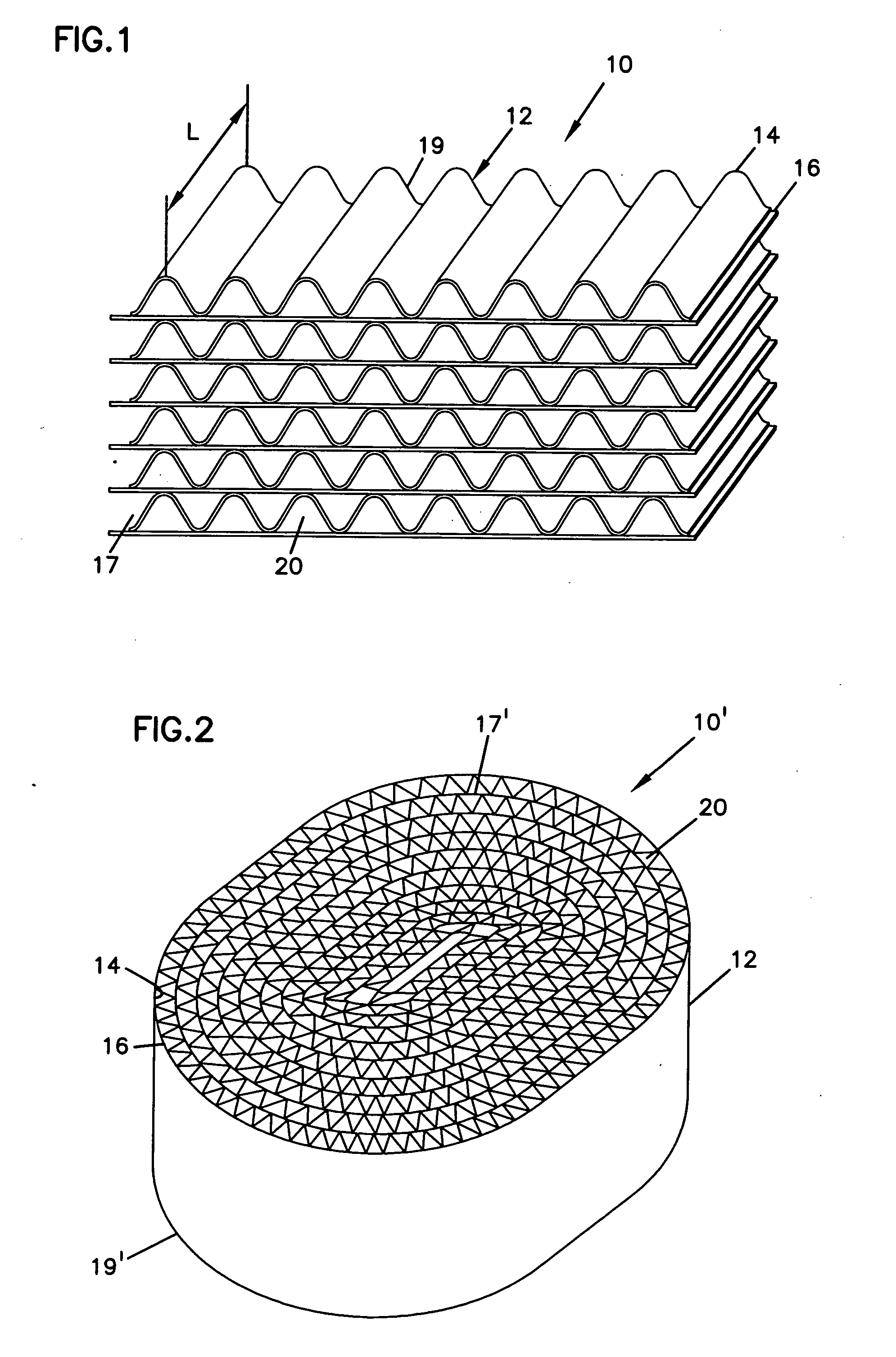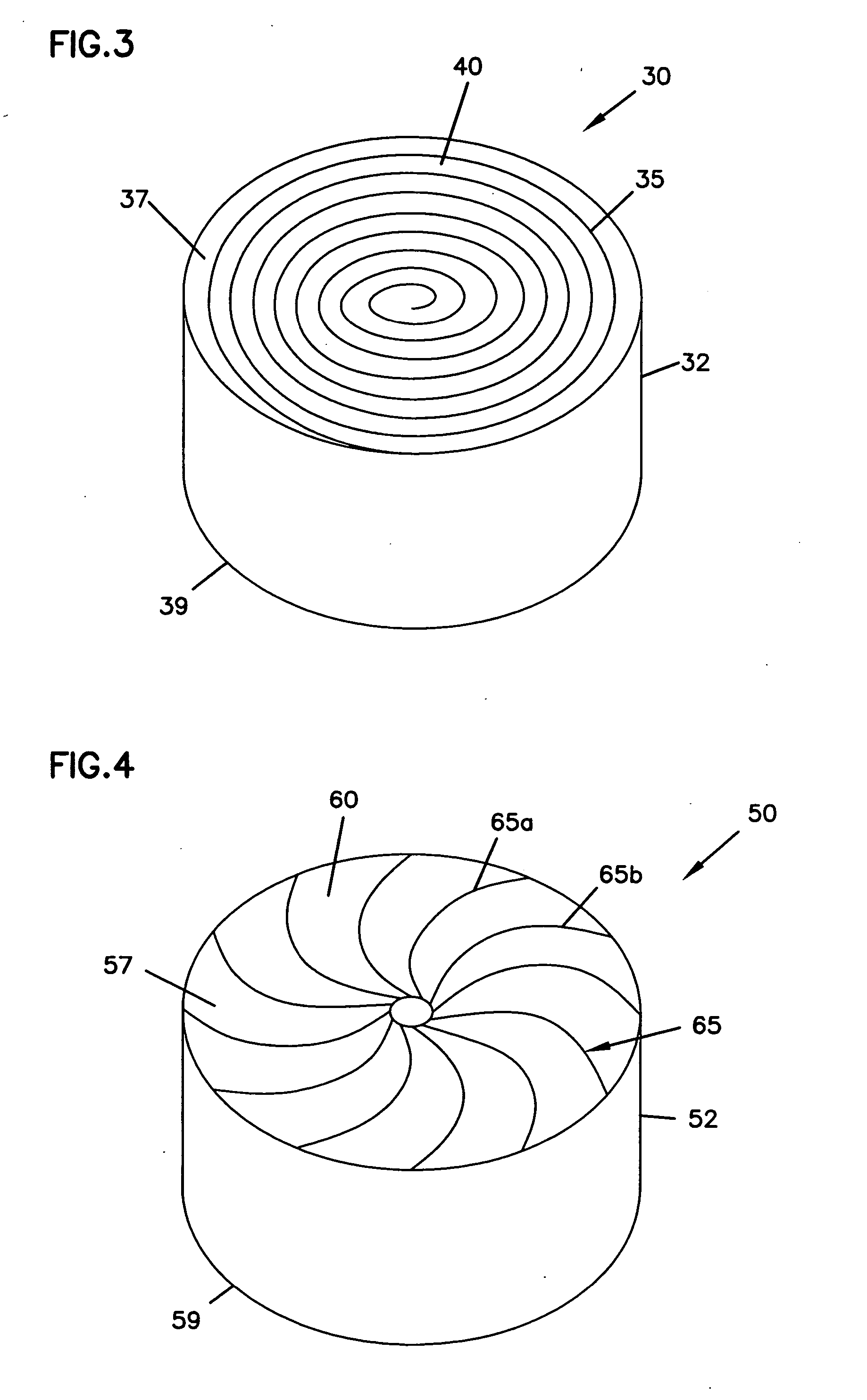Impregnated filter element, and methods
a filter element and impregnated technology, applied in gravity filters, filtration separation, separation processes, etc., can solve the problems of difficult air flow path, high molecular weight and stable amines
- Summary
- Abstract
- Description
- Claims
- Application Information
AI Technical Summary
Benefits of technology
Problems solved by technology
Method used
Image
Examples
examples
[0083] The following non-limiting examples will further illustrate the invention. All parts, percentages, ratios, etc., in the examples are by weight unless otherwise indicated.
[0084] The following substrate body was used for the example contaminant-removal elements:
[0085] Body 1: Body 1 was similar to that of FIG. 2, formed by alternating a flat facing sheet and a sinusoidal corrugated sheet. The sheets were made from 60% cellulose fibers and 40% PET fibers. The sheets were wrapped to form a cylinder. The resulting domed passages had an approximate height of 1.05 mm and width of 2.90 mm. The cross-sectional area of each passage was about 1.5 mm2. The sheets were held together by the thermoplastic material from the sheets, which had been melted with heat created by ultrasonic energy, and then had cooled.
[0086] For filter elements according to the invention, the bodies were impregnated with reactant material by the following method. A volume of reactant solution was placed in a be...
example 1
[0091] A solution of 5% tris(hydroxymethyl)aminomethane in water was made. Body 1, having a diameter of about 3.8 cm and a length of about 2.54 cm, was impregnated with the solution.
[0092] Example 1 and Comparative Example A were tested according to the Breakthrough Test, and the results are shown in FIG. 7. The graph of FIG. 7 illustrates that the impregnated filter element, Example 1, had a drastically extended life. The formaldehyde levels reached 0.5 ppm for Comparative Example A almost immediately, whereas Example 1 had at least 5000 minutes before 0.5 ppm formaldehyde was reached.
PUM
| Property | Measurement | Unit |
|---|---|---|
| Molecular weight | aaaaa | aaaaa |
| Thermoplasticity | aaaaa | aaaaa |
Abstract
Description
Claims
Application Information
 Login to View More
Login to View More - R&D
- Intellectual Property
- Life Sciences
- Materials
- Tech Scout
- Unparalleled Data Quality
- Higher Quality Content
- 60% Fewer Hallucinations
Browse by: Latest US Patents, China's latest patents, Technical Efficacy Thesaurus, Application Domain, Technology Topic, Popular Technical Reports.
© 2025 PatSnap. All rights reserved.Legal|Privacy policy|Modern Slavery Act Transparency Statement|Sitemap|About US| Contact US: help@patsnap.com



